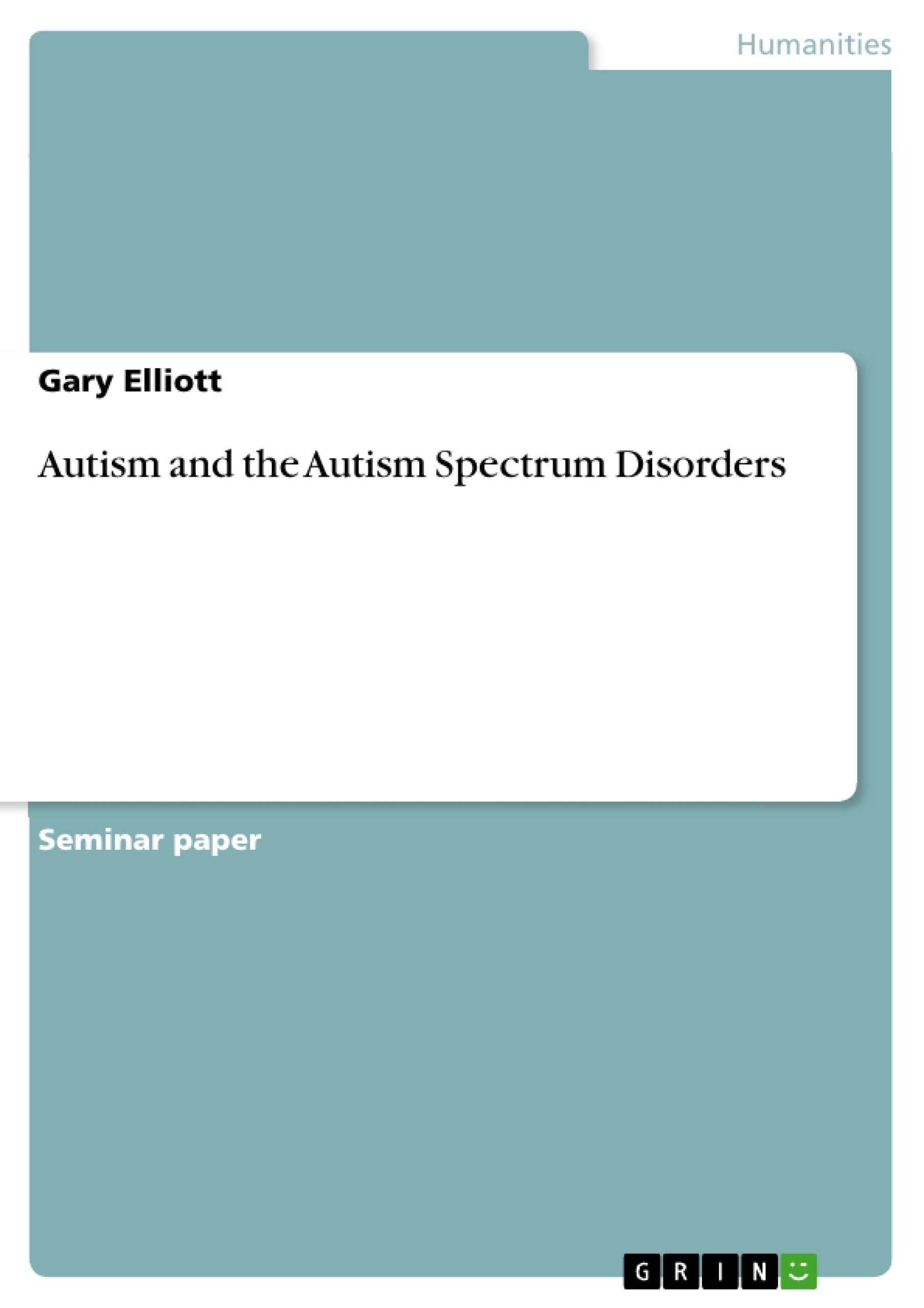The general meaning of the term ‘autism’ stems from the root words: aut meaning ‘self’ and ism meaning ‘orientation or state’. The overriding tendency is to be absorbed with oneself. The child’s thoughts, feelings and desires are governed by his internal apprehensions of the world. The internal is not consonant with the world of reality, giving the notion of pathology, wherein the individual sees things in the form of fantasy or dreams, wishes or hopes, instead of in terms of the reality that is common to others around him (Reber & Reber, 2001).
In Berk (2000), autism is explained as impairment in emotional and gestural (nonverbal) behaviours that are required for successful social interactions. The language is delayed and stereotyped, with some autistic children not speaking at all. Autism is believed to be highly heritable; in the world of the autistic, words such as ‘believe’, ‘think’, ‘know’ and ‘pretend’ are seldom part of their vocabulary (Happe, 1995).
While autistic disorders probably do not have a single cause (Rutter, 1978; Sue, Sue & Sue, 1997), variations of autism (autism spectrum disorders) has been suggested to be the result of neurodevelopmental anomalies in white-matter development (Ellis & Gunter, 1999). Autism Spectrum Disorder (ASD) is a broad category of conditions that share similar symptoms; it is often referred to as pervasive developmental disorder (PDD) (Tilton, 2004).
Inhaltsverzeichnis (Table of Contents)
- Introduction
- Classical Autism
- Pervasive Development Disorder 'not otherwise specified'
- Asperger's Syndrome
- High-functioning Autism
- Rett Syndrome
- Other spectrum disorders
- Diagnosis, cause and prevalence
- Prevalence
- Age of Onset
- Symptoms
- Causes
- The Parents' Experience
- Coexisting Medical Conditions
- Tourette's Syndrome (TS)
- Obsessive-Compulsive Disorder (OCD)
- Seizures
- Auditory Conditions
- Visual Conditions
- Other conditions
- Associated Behaviours and Medication
- Obsessive-Compulsive Behaviour
- Communication
- The Meltdown
- Autism's Impact
- Parents
- Siblings
- As the Child Changes
- Assistance
- The Computer
- Service Animals
- Intervention
- Respite Care
- Support
Zielsetzung und Themenschwerpunkte (Objectives and Key Themes)
This text aims to provide a comprehensive overview of autism spectrum disorders (ASD), covering their diagnosis, causes, prevalence, associated behaviours, and impact on individuals and families. It also explores various forms of assistance and intervention for individuals with ASD.
- Characteristics and diagnosis of different ASDs
- Coexisting medical conditions and associated behaviours
- The impact of ASD on individuals, families, and society
- Available resources and support systems for individuals with ASD
- Intervention strategies and respite care options
Zusammenfassung der Kapitel (Chapter Summaries)
The introduction defines the term 'autism' and its origins, explaining its core characteristics and impact on individuals with ASD. It also highlights the heterogeneity of symptoms within the spectrum.
Chapter 2 explores the prevalence, age of onset, and symptoms of ASD. It delves into the causes of ASD and the experiences of parents of children with ASD.
Chapter 3 discusses coexisting medical conditions often found in individuals with ASD, including Tourette's Syndrome, Obsessive-Compulsive Disorder, and seizures. It also examines auditory and visual conditions associated with ASD.
Chapter 4 focuses on associated behaviours and medication for individuals with ASD. It explores obsessive-compulsive behaviour, communication challenges, and the phenomenon of meltdowns.
Chapter 5 examines the impact of ASD on parents and siblings of individuals with ASD.
Chapter 6 discusses changes in individuals with ASD as they grow older.
Chapter 7 provides an overview of various forms of assistance available for individuals with ASD, including the use of computers and service animals.
Chapter 8 explores intervention strategies and support systems for individuals with ASD, including respite care and broader support networks.
Schlüsselwörter (Keywords)
Autism spectrum disorders, diagnosis, prevalence, symptoms, causes, coexisting medical conditions, associated behaviours, medication, impact on families, assistance, intervention, respite care, support networks, communication, social interaction, repetitive behaviours, sensory overload, high-functioning autism, Asperger's syndrome, pervasive developmental disorder.
- Arbeit zitieren
- Gary Elliott (Autor:in), 2010, Autism and the Autism Spectrum Disorders, München, GRIN Verlag, https://www.grin.com/document/275089



